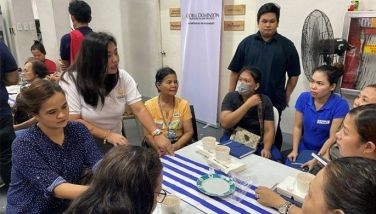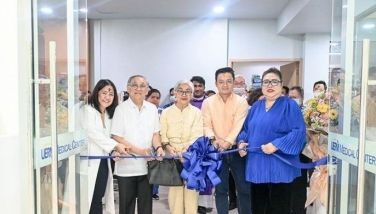Understanding the Filipino biological clock: Chronotyping the Philippines
Circadian (biological) clocks control physiology on many levels, from gene expression to complex behaviors, including mental and physical performance. Circadian clocks are synchronized to the 24-hour day primarily by the light-dark cycle in a process called entrainment. There are many possible time-giving cues or zeitgebers that contribute to entrainment, and the most effective of these is bright light. The alignment of the circadian clock with light works such that light during late internal night or early morning shortens the internal day, while light during the internal afternoon or evening lengthens internal day. Entrainment is thus disrupted when social schedules are not in time with light-dark cycles, as in the case of night shift workers. The relationship between external and internal time is called phase of entrainment. Individuals differ in their phases of entrainment, referred to as chronotypes, and this is reflected in the variability in timing of preferred activities in the course of the day such as sleep and wake behaviors. Some individuals feel more awake, alert, and able to do their best work in the morning while others have a hard time feeling alert in the morning, and feel that they are most productive in the evening. While individual variation in chronotype has been described for other populations, there is no such data for Filipinos.
Determining the chronotype of the Filipino general population is an important first step in understanding the complexity of the human circadian clock, and this is the first stage in a series of researches of PhilSHIFT. PhilSHIFT is an interdisciplinary group that brings together researchers from the University of the Philippines Manila (UP Manila), namely Prof. Maria Eliza Aguila of the UP College of Allied Medical Professions, Prof. Gayline F. Manalang Jr. of the UP College of Public Health, and Dr. D. Darwin Dasig of the College of Medicine and a number of researchers from the Ludwig Maximilians University Munich Institute of Medical Psychology, led by Prof. Till Roenneberg, MD, and Eduardo Mendoza, Ph.D. In this cooperation, the Philippines benefits from collaborating with an institution such as the LMU that has done pioneering work on the circadian clock and shift work.
Establishing a database of chronotypes of non-shift workers in the Philippines will build the basis for the succeeding stages of the PhilSHIFT research, which will investigate characteristics of the circadian clock of shift workers. These shift work studies are proposed collaborations between PhilSHIFT and a group of contact centers in the Philippines. While a number of researches have been done on shift workers, particularly call center agents, the shift work studies of PhilSHIFT will be the first study in the Philippines that will focus on the individual by considering the circadian clock. Specifically, the second stage will determine chronotypes of shift workers in the Philippines and the third stage will be field studies with call center agents as participants. The University of the Philippines Manila takes on this novel initiative to study the properties of the human circadian clock in real life and in an entirely different work environment than those that have been studied so far elsewhere such as factories.
Understanding the circadian clock is particularly important in these times when there is increased connectivity and interdependence between societies, resulting in work schedules that may not be in step with a person’s circadian clock. The booming business process outsourcing industry in the country comes with increased number of employees on shift work. Epidemiological studies have shown that shift work is associated with health risks. The increased susceptibility to cancer, cardiovascular and gastrointestinal complaints is largely attributed to the circadian clock being dysfunctional among shift workers due to desynchronization. Through research, strategies could be devised to take advantage of inter-individual variability of chronotype to improve well being, performance and productivity without increasing health risks.
Before these shift work studies can be done, it is necessary to formulate a database of chronotype of non-shift working Filipinos. For this first stage of PhilSHIFT research, chronotyping non-shift working Filipinos in the Philippines will be done using the Munich Chronotype Questionnaire (MCTQ), an online questionnaire available at http://www.bioinfo.mpg.de/thewep/. The MCTQ helps us understand the individual differences in the circadian clock and its underlying complexity. It is easy to accomplish and has been shown to be an accurate estimate of chronotype through a few simple questions on sleep during workdays and free days. Questions include those on actual sleep and activity times (e.g., when do you go to bed, how long do you need to fall asleep, when do you wake up) and exposure to outdoor light, and account for the confounding effect of work-related sleep deprivation. These questions provide insights on dependencies of chronotype on age and sex and how social schedules as experienced during the workweek may affect sleep/wake behavior. After answering the MCTQ, an automatic evaluation of one’s chronotype is sent through e-mail showing how one’s results compare with those of other individuals who have so far filled out the questionnaire.
It is hoped that this PhilSHIFT project will translate fundamental research in the laboratory to real-world conditions. For example, previous research has established that genetics determines chronotype, i.e., whether one would feel more alert in the morning or would be most productive in the evening. Aside from genes, other factors that influence chronotype include age, daily work or school schedules, and other environmental, lifestyle, and social factors. Age-dependence of chronotype is such that children are generally earlier chronotypes. They then progressively become later chronotypes toward adolescence, with a maximum in “lateness” at about 20 years old. With increasing age, they then become earlier chronotypes again, becoming even earlier than they were as children when they reach past 60 years old. A gender difference is seen from 20 to about 50 years old as females are generally earlier chronotypes compared to age-matched males during this period. This gender difference disappears at around 50 years old.
The PhilSHIFT project builds on the ClockWork Project, a five-year (2005-2010) project in Europe funded by the Daimler Benz Foundation, which explores the relationship of chronotype and shift work tolerance through a number of inter-disciplinary projects. PhilSHIFT also adopts the overall goal of the ClockWork Project which is to create an integrated view of the interacting factors contributing to the structure of work and free time and its specific goals which are to take advantage of inter-individual variability of chronotypes, to devise strategies that minimize shift work-induced health risks and to optimize shift work schedules that increase well being, performance and productivity while decreasing health costs. Like PhilSHIFT, the ClockWork Project is also a collaboration that included Siemens, VW and Osram as industry partners and University of Basel (Switzerland), University of Tübingen in Germany, and Charité Berlin as academic partners. Among the completed ClockWork research projects are on minimizing social jetlag in shift work, effects of different light environment on human circadian physiology and cognitive performance at schools and PC-workplaces, prevention of accidents caused by language-based performance deficits in shift work, and sensorimotor performance on the daily structure of work.
You can participate in this novel initiative by accomplishing the MCTQ. Please go to http://www.bioinfo.mpg.de/thewep/. If you are a new user of The WeP, register for an account first. If you already have a WeP username, sign in with your username and password. You will find the Sign In button and the Registration link at the upper right-hand corner of the webpage. Once you’re logged in, under the Projects tab, click on “View My Projects.” Then choose PhilMCTQ among the projects.
* * *
Maria Eliza Ruiz Aguila is an assistant professor of physical therapy at the University of the Philippines’ Manila College of Allied Medical Professions. She is a graduate student of physiology, which led to her interest in chronobiology. She is a co-investigator of PhilSHIFT and has undergone training on research methods for shift work field studies at the Siemens Berlin project (September/October 2009). She also holds administrative positions in the university, presently as the assistant to the Chancellor for Special Academic Projects and concurrently director of the Interactive Learning Center. E-mail her at [email protected].
- Latest



























